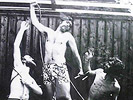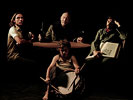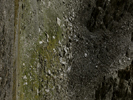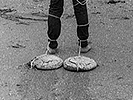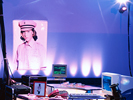/ returnable /
The 1st returnable platform was developed from april 2008 to march 2009 by echo ho, susanna schoenberg & fei jun toghether with students of KHM Cologne and CAFA Beijing.
The cooperative seminar was part of an exchange programme co-directed by frans vogelaar and co-financiated by the german DAAD exchange programme.
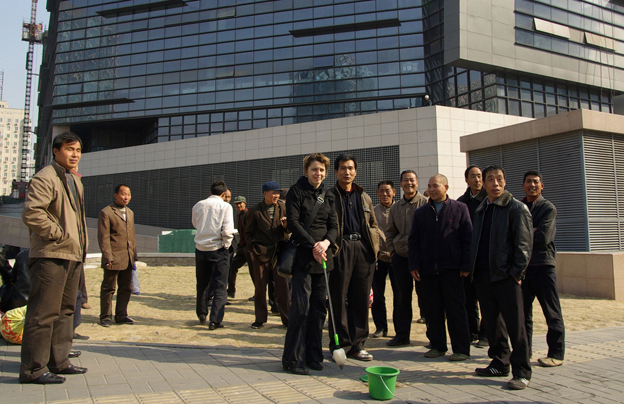
arte-e-parte / Public Communication Belt / 2009-03-23 / Dong Zhi Men Beijing (China) / photograph: liu feng.
To be returnable means to have been thought for a re-use (as some kind of bottles are) or a check after the use (as some kind of documents are), to have been designed as something supposed to come back to the starting/emitting position, or to re-enter a cycle: at least it is a condition for being recyclable. But the corresponding image for returnability is not the circle as an A to A connection (over B, C, D, ...), but a 2-way segment (an A to B plus B to A connection). Returnability has a kind of dialogical touch referring to multiple actors, or multiple functional estates, differentiated possibilities of context. It is also the attitude which authority has to evaluate for a citizen leaving the homeland: will the citizen be able to return (is the passport able to bring him/her back)?
For an exchange program between the students of the Media Lab at the Central Academy Fine Arts in Beijing and students of KHM >>returnability<< was chosen as a label with multiple meanings referring both to some relevant aspects of the urban situation in Beijing (›returnable spaces‹ in a post-Olympic site, e. g.) and the position of exchange actors and non professional ethnographers (›returnable visitors‹ as a temporary state for young artists in residence and art and design students working ›on field‹). So returnability was chosen as the significant strategy for a workshop offered at the Media Lab during the exchange period under the title returnable data.
The data were produced by monitoring and ›observation‹ of patterns of behavior in ›public‹ or semi-public space; to produce data means in this case to define a ›framework‹ in a space the observer can access easily and to label it: classifying situations given by a kind of architectural structure, finding (artificial) references for the situations aware of the one-sidedness of fixing references (as an observer but also an involved actor).
excerpt from:
susanna schoenberg / to be able to return (data) / in: off topic # 1 >aufraeumen< / Cologne 2009.
http://www.returnable-spaces.net
A 2nd returnable platform was developed from october 2009 to february 2010 by susanna schoenberg & stefanie stallschus together with students of KHM Cologne: Returnable - spaces, data, things.
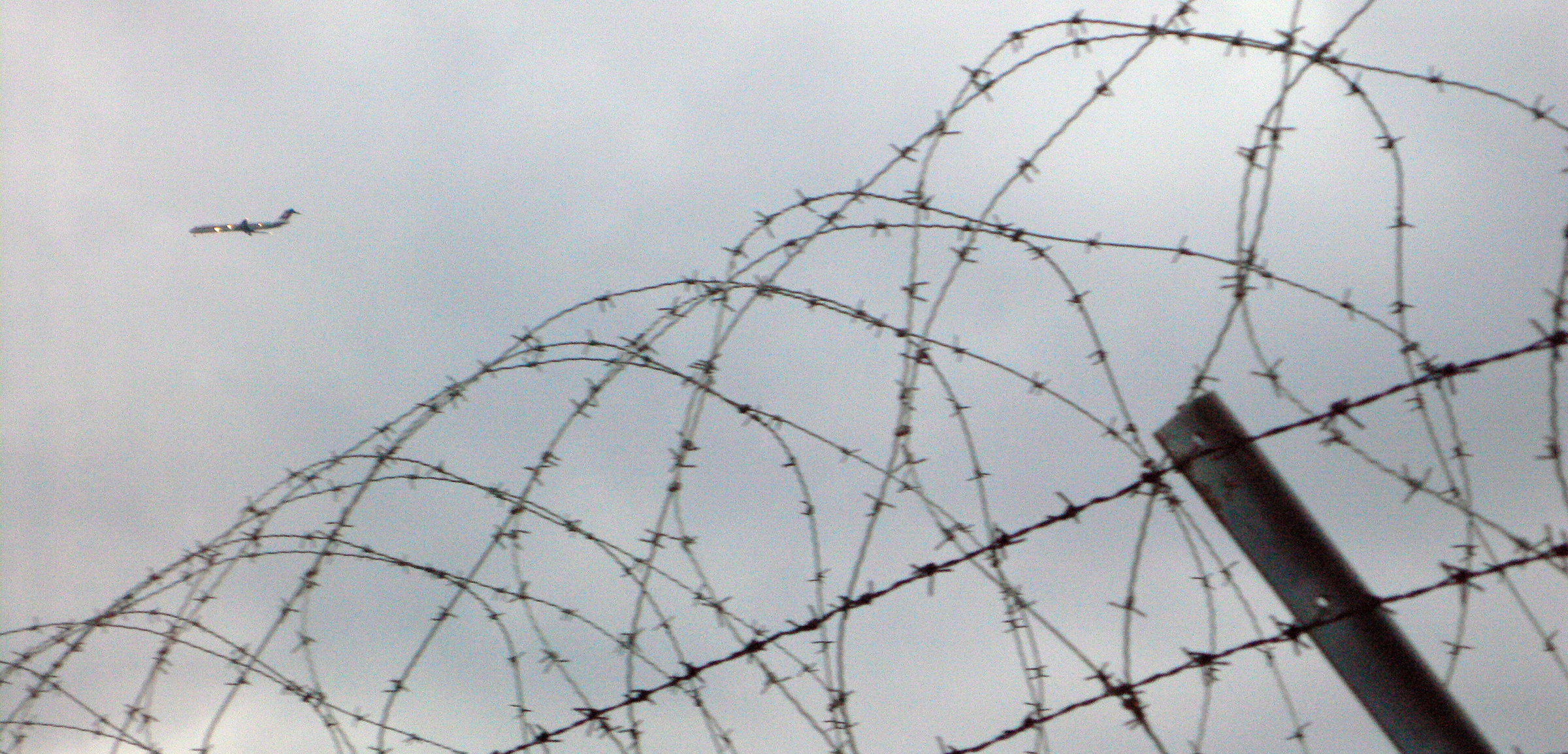
photograph: aino korvensyrjä
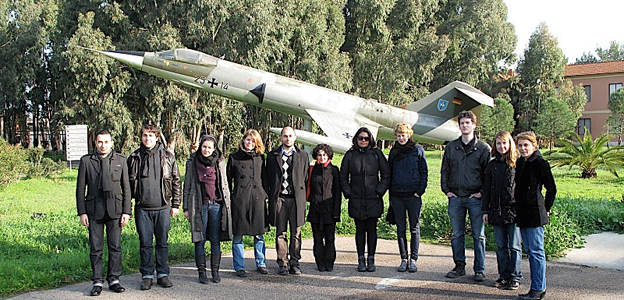
photograph: aereonautica italiana, courtesy: johannes amorosa
For a last field trip the group of artist-researchers moved to the island of Sardinia, where they settled down in San Sperate, a little community in the southern province of Cagliari.
With the support of Officine Vida and a local network for art and cultural initiative around artist pinuccio sciola, the group produced a returnable workshop, including excursions, public encounters and interventions.
documentation gallery:
http://blog.khm.de/mk/julia_scher/gallery2/main.php?g2_itemId=2680&g2_navId=x51fc3336
host blog:
http://www.paesemuseo.com/index.php/component/
content/article/121
A 3rd returnable platform took place in november 2011 with the participation of artists: Malgorzata Calusinska, Martin Rumori, Dirk Specht, Susanna Schoenberg, Franziska Windisch.
from left: franziska windisch, COAL ROOM, test arrangement, 2011; Susanna Schoenberg, EXTERIOR #20090311_0058, video, 2009; Malgorzata Calusinska, AUFFALTUNG, Silikon and Asphalt, 2009
Some drafts of the returnable field work were presented at Museo del Crudo, San Sperate, on November 29, 2011.
http://www.paesemuseo.com/index.php/archivio-notizie/196-returnable2011
